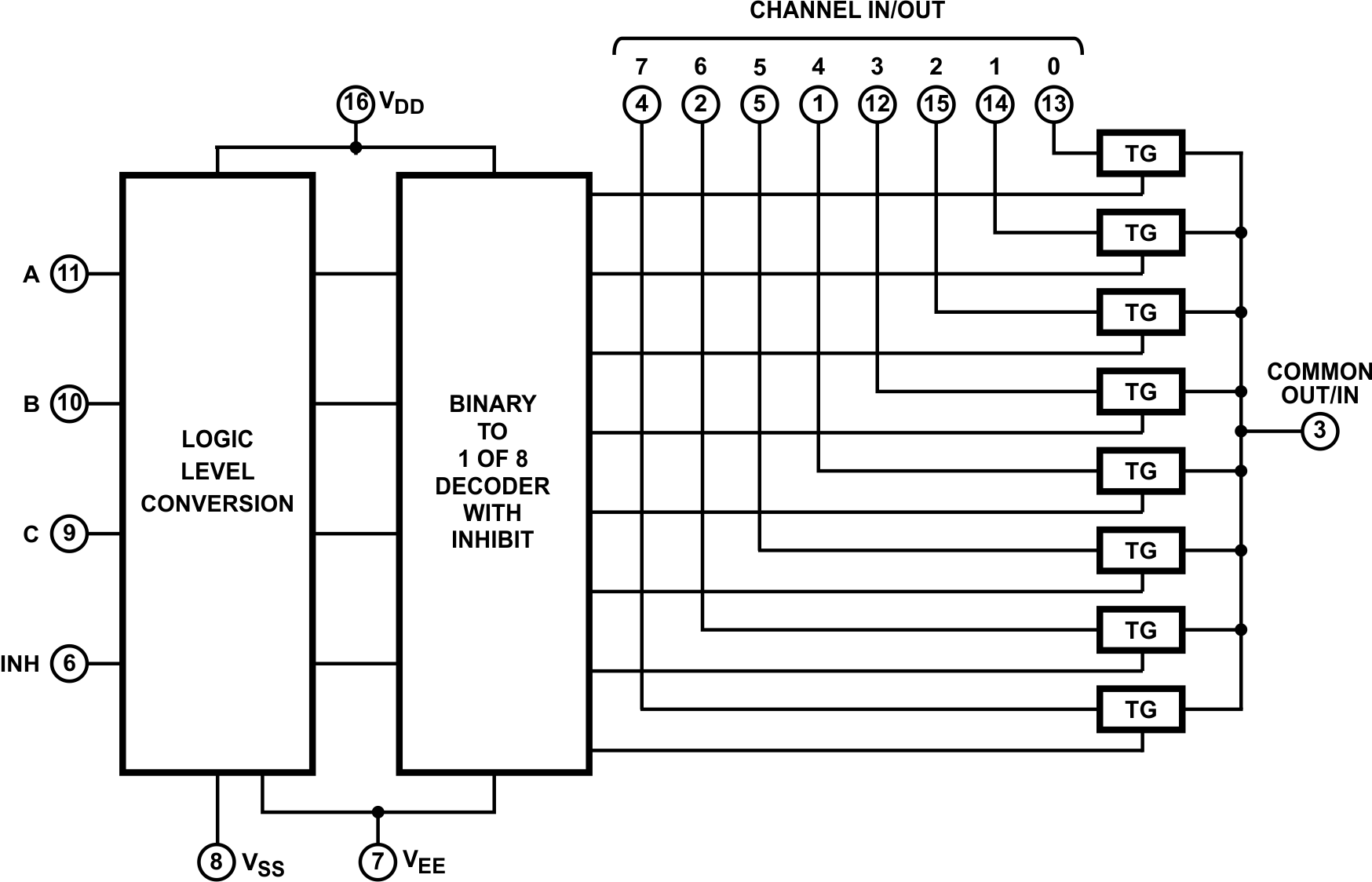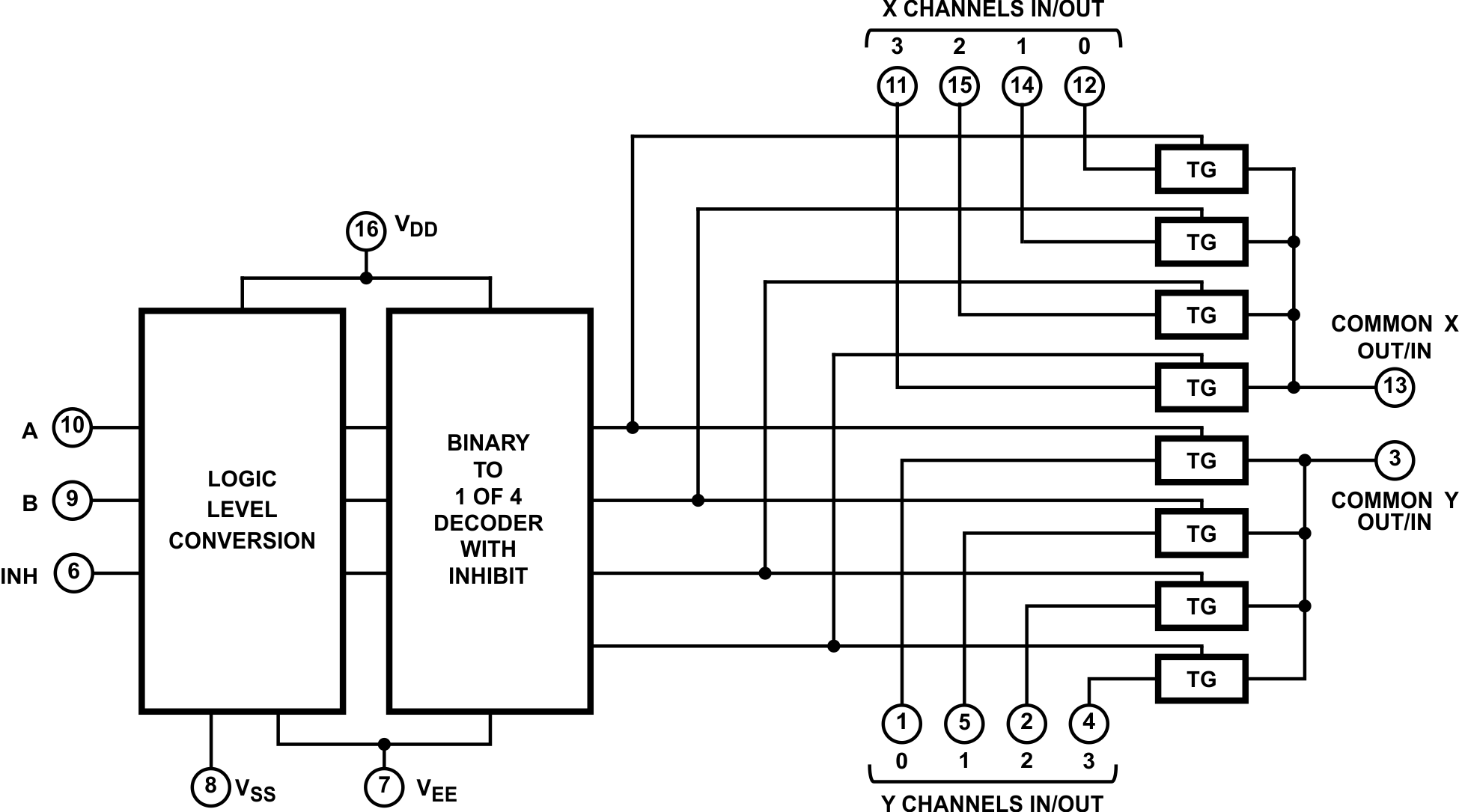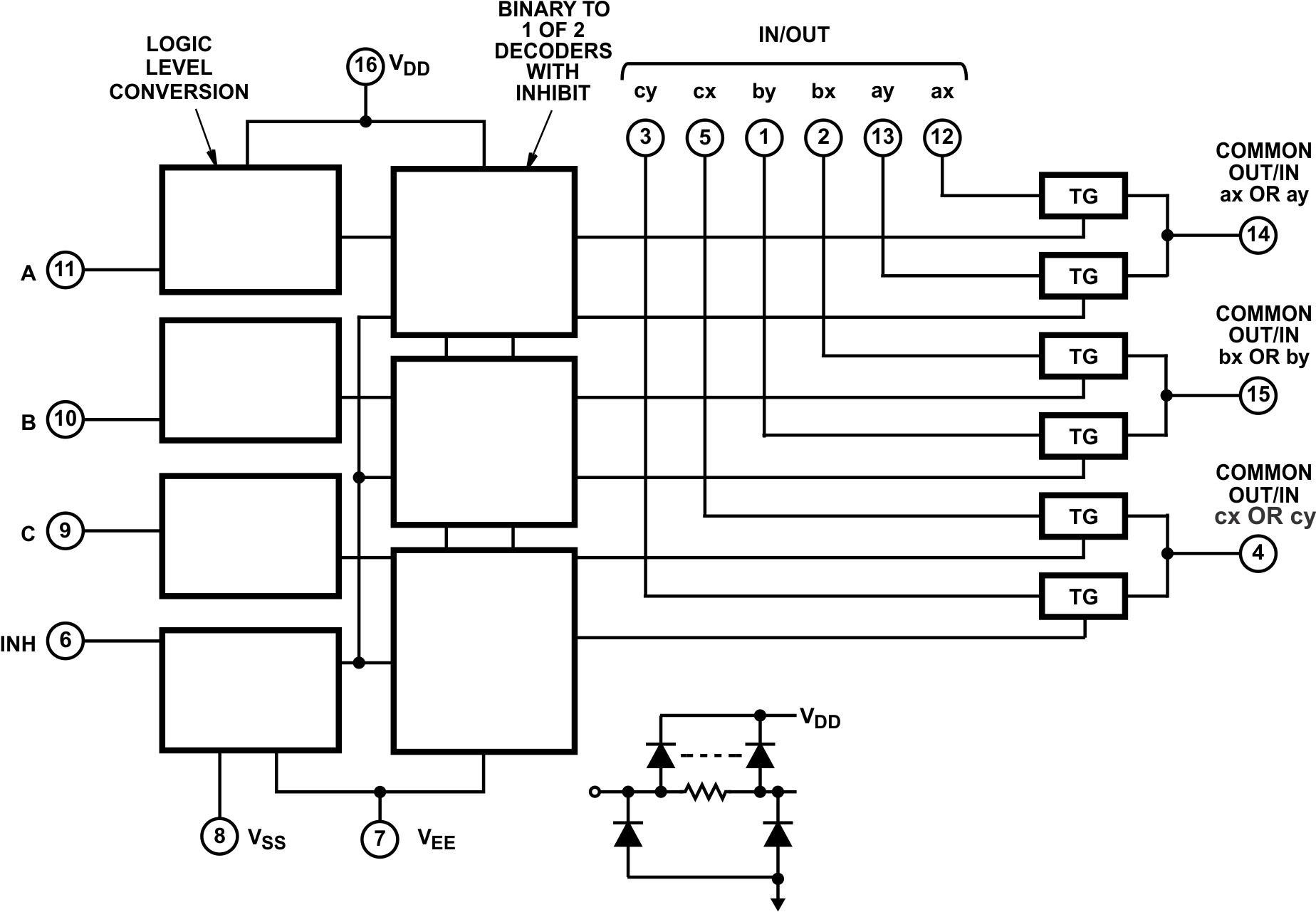SCHS047M August 1998 – November 2024 CD4051B , CD4051B-MIL , CD4052B , CD4052B-MIL , CD4053B , CD4053B-MIL
PRODUCTION DATA
7.2 Functional Block Diagrams

All inputs are protected by standard CMOS protection network.
Figure 7-1 Functional Block Diagram, CD4051B
All inputs are protected by standard CMOS protection network.
Figure 7-2 Functional Block Diagram, CD4052B
All inputs are protected by standard CMOS protection network.
Figure 7-3 Functional Block Diagram, CD4053B